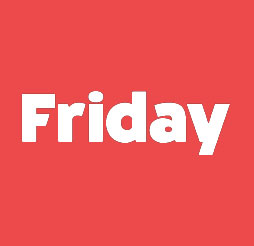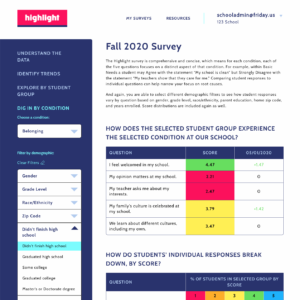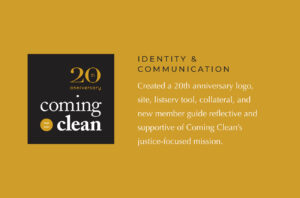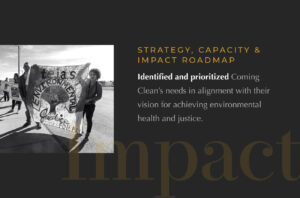Economic Opportunity:
Creating and Sustaining Economic Security for All
Equity is valuable, and not just ethically. Since 1990, economic inequity has cost the U.S. economy $22.9 trillion.
Despite the expense of economic injustice, racial and gender income disparities linger. Education attainment rates are disproportionately low among Black and Latin populations. De facto segregation continues to pervade schooling and housing.
Here’s the great news: the people, resources, partnerships, and information necessary to address this enduring challenge are all around us.
Our team has worked with organizations daring enough to seek out solutions and innovative enough to create economic opportunity for the people they serve. Explore the following sections to learn how they’ve moved their communities into a better tomorrow:

What is Economic Opportunity?
While there is no single definition for economic opportunity, it generally refers to the options a person can pursue to achieve financial autonomy. Pathways to economic opportunity include the following:
- High-quality education
- Pathways to careers
- Access to healthy food
- Affordable healthcare
- Family services
- Financial literacy
There are many existing programs that promote economic security and financial freedom. Still, these programs are only as useful as they are visibly and effectively communicated to the people who need them most
Economic Opportunity in America: Key Insights
For some people, the path to economic prosperity is straightforward: do well in K-12 education systems, graduate with a higher education degree, and get a job.
In reality, the path to economic opportunity is not that simple for most people.
The data makes one fact abundantly clear: economic justice requires an intersectional approach.
Organizations seeking to create economic opportunity must address the multidimensionality of inequity, leveraging strategy, storytelling, and programming to enhance their influence and improve the communities they serve.
3 Practical Examples of Economic Opportunity
These inspiring examples of economic opportunity transform intersectional barriers into broad avenues of upward mobility.
#1: High quality education is an inside job.
When Rocklin Academy Family of Schools decided to open a school in Citrus Heights, CA, they knew creating student-centered solutions would require answering complex questions:
- How would the academy create inclusive access to students who most needed the opportunities Rocklin offered?
- How could Rocklin sustain growth and prepare their leaders in this ever-challenging, constantly evolving field?
- How could this new school interact with its community in a way that promoted unity, advanced strategic goals, and maintained the integrity of its vision?
Rocklin worked with the Friday team to do rigorous strategic planning, refining and solidifying its core values and developing an internal leadership program designed to develop current and former students and families as potential staff and community ambassadors. Learn more about Rocklin Academy Family of School’s strategic planning and program design.
#2: Effective systemic change centers those most directly impacted.
Everyone from educators to community leaders is invested in improving educational experiences for children – but a key population is often excluded from the conversation: the children themselves.
Friday developed the Highlight student survey to help K-12 education providers answer these questions about their students – the people most directly impacted by education systems:
- Do students feel safe in their school?
- Do they feel engaged in classroom activities?
- Are students challenged academically?
- Do they believe in their ability to overcome challenges?
We administered this survey to 20 schools and more than 6,300 students. Their answers were both sobering, inspiring, and the type of data that directs economic opportunity efforts where they matter most. Find out what students are saying about their experiences at school.
#3: Designing a clear path from an exciting vision to an equitable reality.
Coming Clean works to help its 200+ member organizations and 350 individual experts promote environmental health and economic justice. After doing this work for 20 years, the organization knew it was time for a change.
Coming Clean came to Friday with common problems mission-driven organizations face, especially after long-term operation:
- Decreased member engagement
- Difficulty explaining its organization’s identity, partners, and experts
- Strategy and communication gaps resulting in missed opportunities
By aligning strategic goals, storytelling, and programming, Coming Clean was able to boost engagement, expand its staff, and increase its revenue through a democratic, equitable member giving campaign. Read how Coming Clean’s strategic planning process increased organizational capacity.
Integrating Economic Opportunity, Education, and Community Development
At Friday, we guide the innovation of human-centered, economic interventions for systemically excluded communities. We begin by exploring a theory of change – identifying and evaluating ways an organization’s strengths can close inequities – and move into planning, communicating, and producing measurable, sustainable progress.
Our multidisciplinary team equips social impact organizations to drive equitable prosperity by aligning strategy, storytelling, and programming. Our framework identifies internal and external opportunities, so mission-driven organizations know what they’re doing well, where they have room to grow, and how to sustain the deepest impact.
Opening the Door is Just the Beginning
The Friday team understands the intersectional work needed to dismantle barriers to economic justice, and we’re ready to help you connect your vision of a better tomorrow with realistic action plans needed today.
Whether it’s through a community fund, workforce development, or unprecedented enterprise, we empower champions of economic opportunity to expand what’s possible. Learn how our eight-week strategic planning process can help you move economic opportunity FORWARD.










